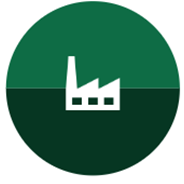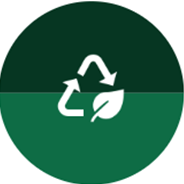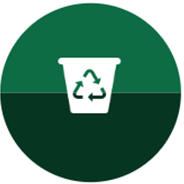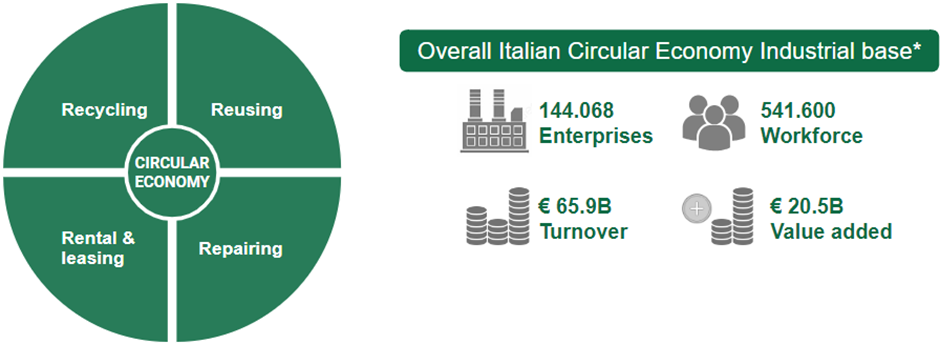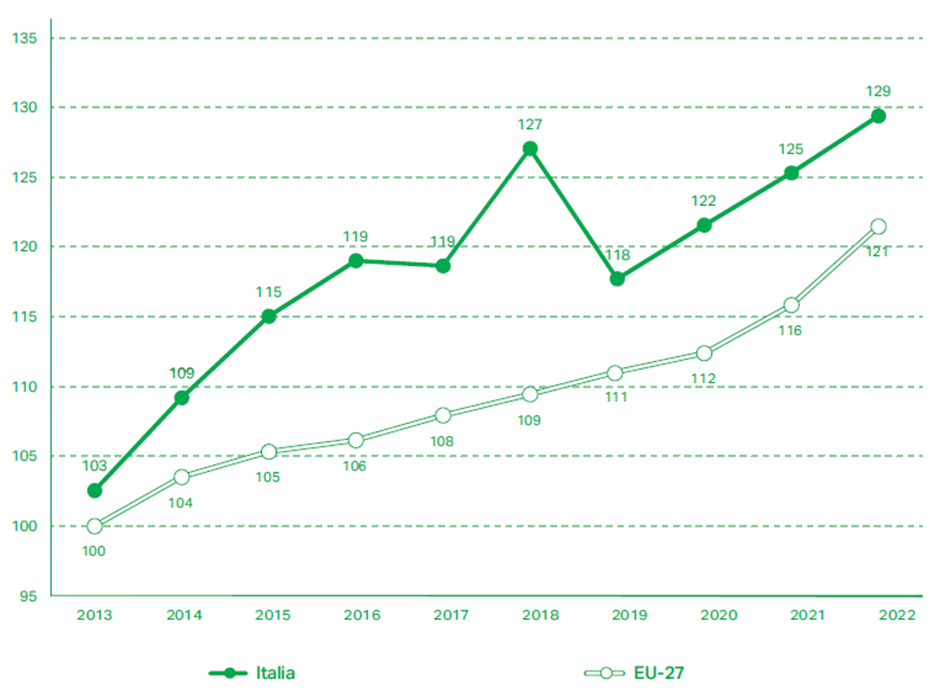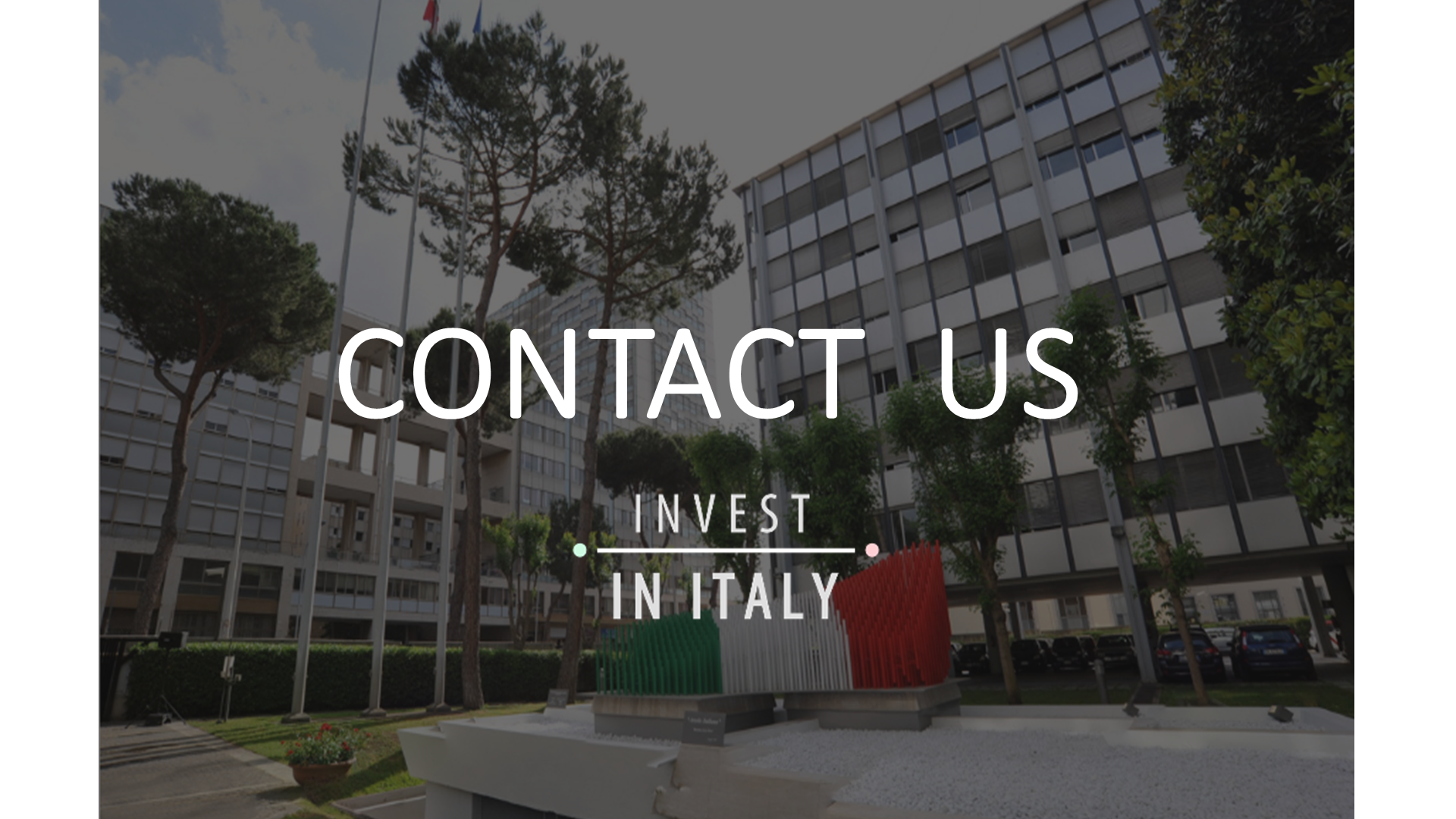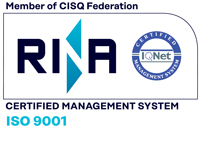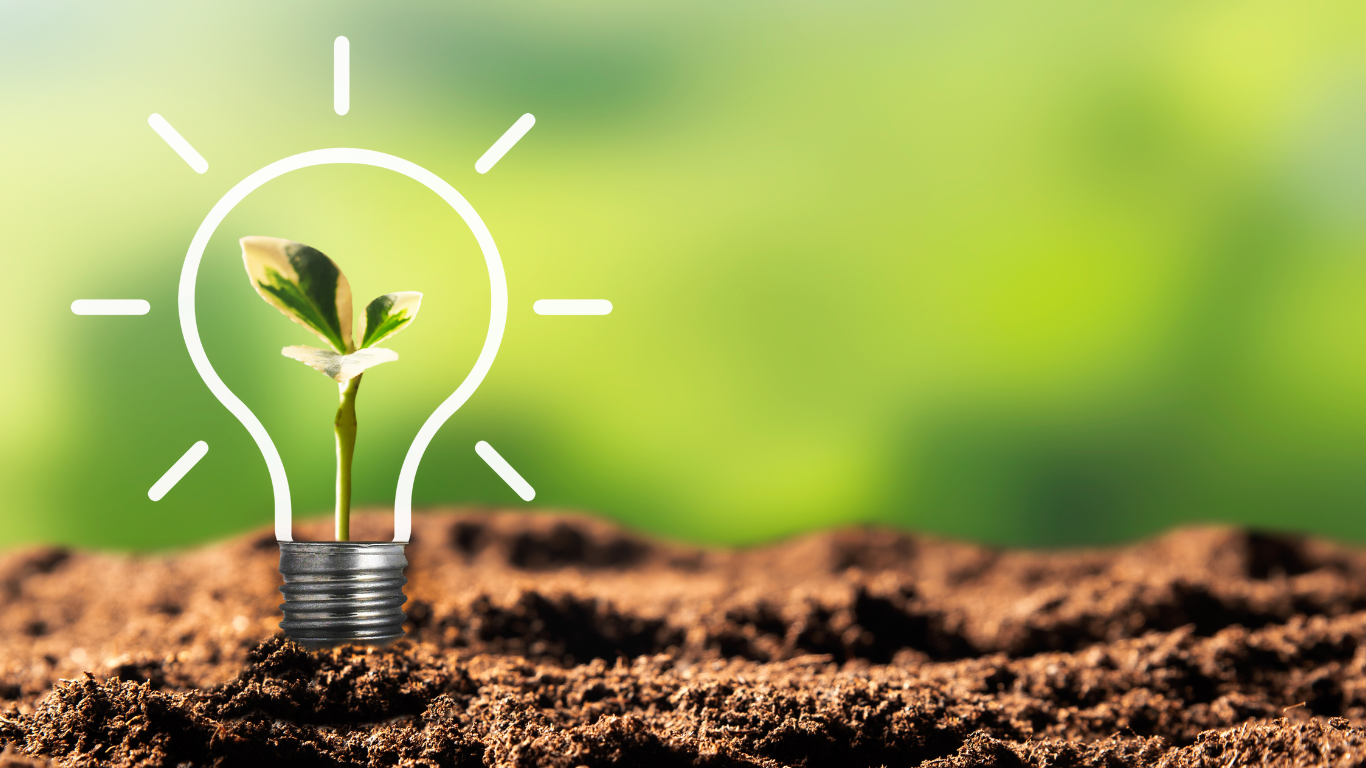
The global challenge of green transition to reach a more sustainable world is also present in the Italian production system. Being the second most important European manufacturing economy -strategically located in the heart of the Mediterranean- , taly offers a remarkable ecosystem ready to adopt Circular Economy principles, with special attention to productive activities aimed at closing the loop as well as facing the international raw materials shortage crisis.
Italian circular economy: a path to sustainability
|
|
HIGHLY DEVELOPED INDUSTRIAL BASE Italy is renowned by its world-class manufacturing industry. End-of-Waste materials find applications in Made In Italy manufacturing excellence such as Automotive, Furniture, Agriculture, Textiles and Clothing. |
|
|
OUTSTANDING OVERALL RECYCLING RATE The Italian recycling rate of all waste excluding major mineral waste is the highest among the 5 main European economies (67%) and above the EU27 average (55%). |
|
|
FIRST-CLASS CIRCULAR MATERIAL USE RATE Italy boasts the second highest share (21,6%) of material recovered and fed back into the economy among the main European Union economies. |
|
|
NEW POLICIES AND INCENTIVES In addition to other national policies and incentives, the new National Recovery and Resilience Plan is set to transform the national economic landscape, being one of the most comprehensive investment plans in Italy with the Circular Economy principles at its core. |
The Circular Economy industry groups a set of productive industries in which multiple actors are involved and interconnected.
Therefore, within the Circular Economy Industry it is possible to identify several economic activities related to different stages of the “closing the loop” process.
|
|
*Sectors defined by Eurostat as approximated to Circular Economy in terms of economic activity branches of the NACE Rev. 2 classification: E 38.11 E 38.12 E 38.31 E 38.32 G 46.77 G 47.79 C 33.11 C 33.12 C 33.13 C 33.14 C 33.15 C 33.16 C 33.17 C 33.19 G 45.20 G 45.40 S 95.11 S 95.12 S 95.21 S 95.22 S 95.23 S 95.24 S 95.25 S 95.29
Specifically, as for packaging waste recycling, in Italy it has reached remarkable results in recent years: in 2021, the country registered 10,5 million tonnes of recycled packaging waste and a recycling rate of packaging waste of 73,3%, hitting 4 years in advance the European target for 2025 (65%) and 9 years in advance the one set for 2030 (70%).
|
|
Source: Fondazione per lo Sviluppo Sostenibile - Sustainable development Foundation, Recycling in Italy 2022 - Summary
Another remarkable result for Italy is the one related to environmental innovation. In particular, the Eco-Innovation Index, which measures the performance of environmental innovation of EU member States, is made up of 5 key dimensions:
1) input of eco-innovation;
2) activity of eco-innovation;
3) output of eco-innovation;
4) resource efficiency;
5) socio-economic results;
Among the EU-27, the top 9 countries with the best performance of the index are called Eco-Leaders.
Italy is among the Eco-Leaders in the EU, ranking 8th in the Eco-Leaders group with a score of 129 points, performing better than the average of the EU-27 in the decade 2013-2022. Additionally, the country ranks 1st in EU in terms of resource efficiency with a score of 274 points (vs. the 147 points of the average of the EU countries).
|
|
Source: Symbola - GreenItaly Report 2023 from European Commission
Sources: Invitalia Report 2023 on data from Istat, Eurostat (2019); Eurostat [CEI_CIE010], Resource Productivity [ENV_AC_RP]; UNIDO.
Fondazione per lo Sviluppo Sostenibile - Sustainable development Foundation, Recycling in Italy 2022 - Summary.
Symbola - GreenItaly Report 2023.

